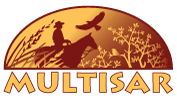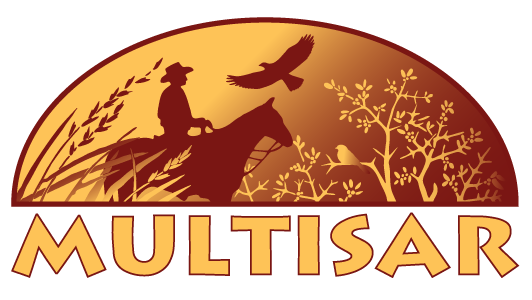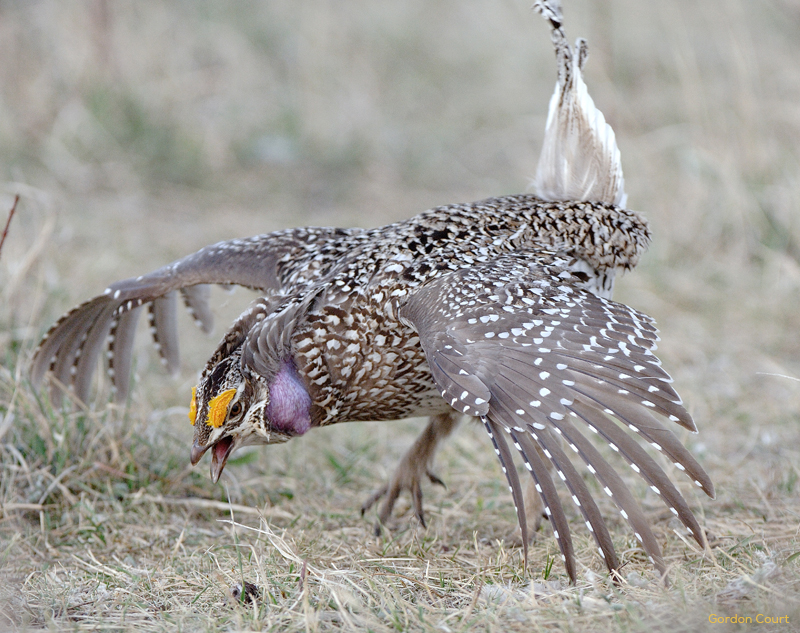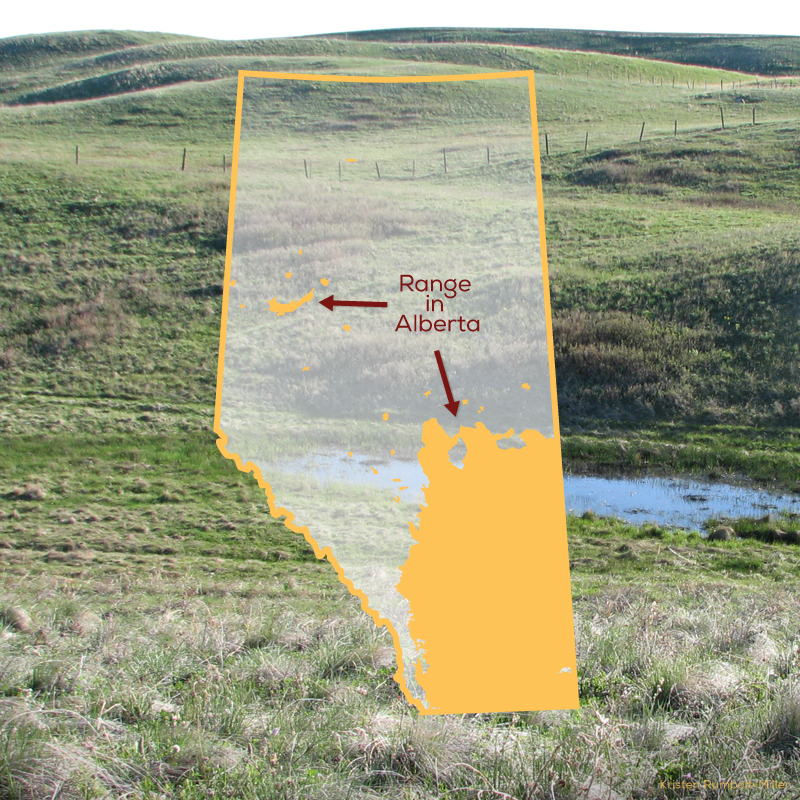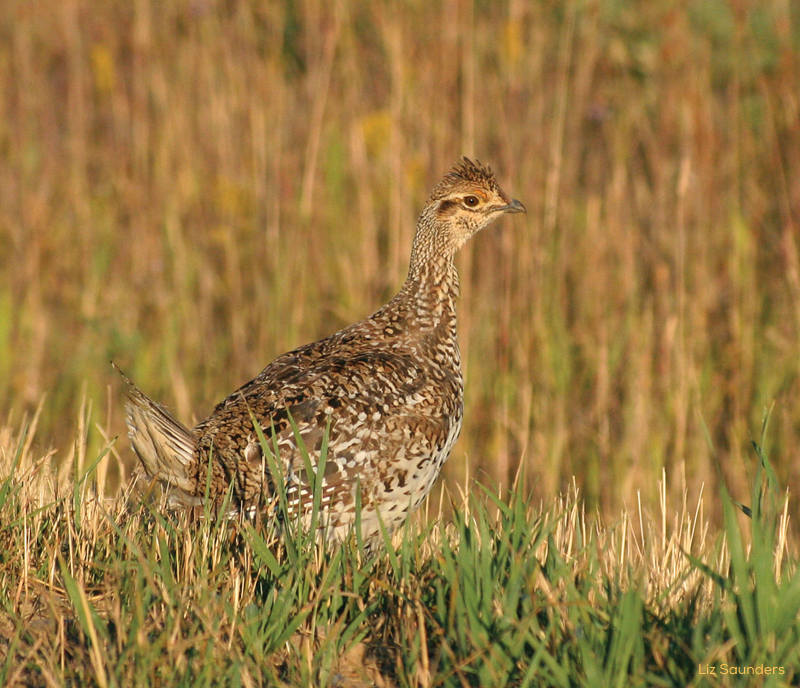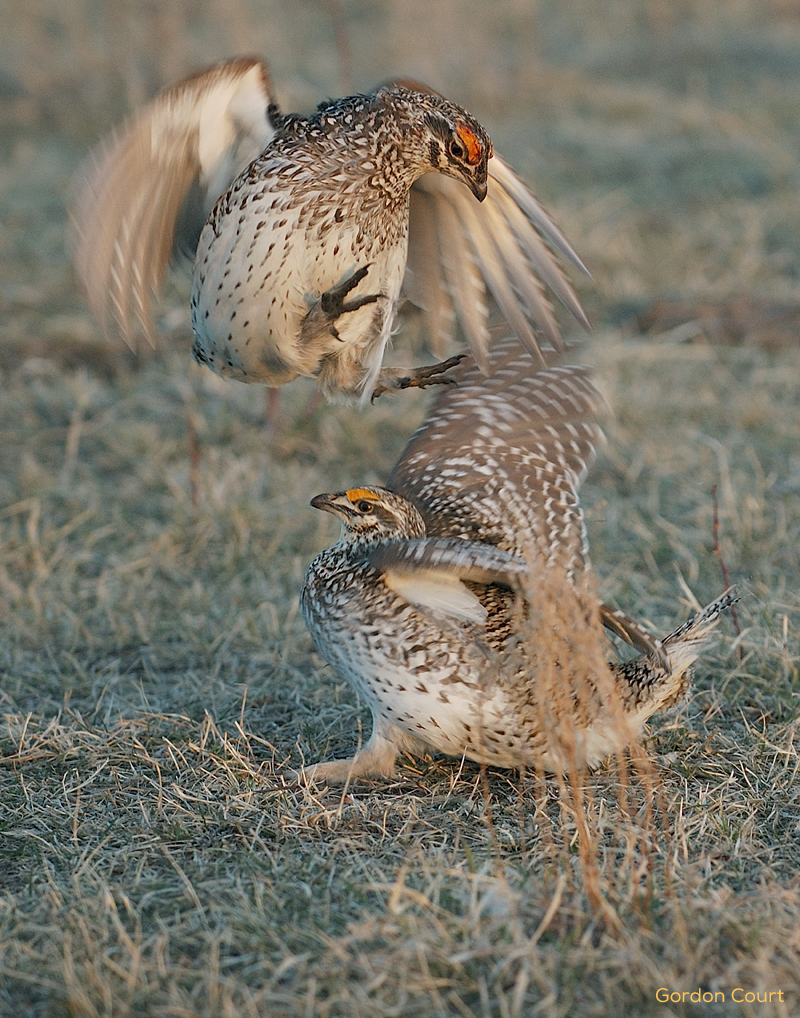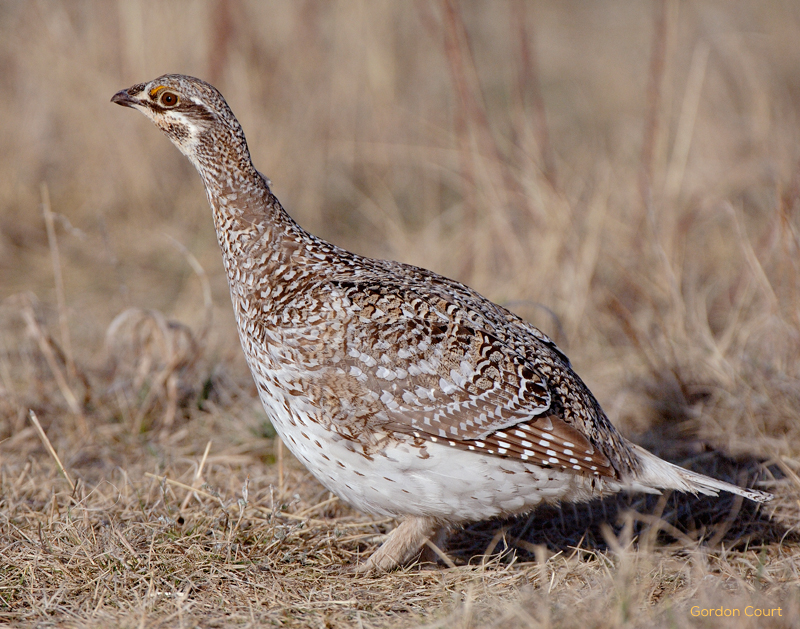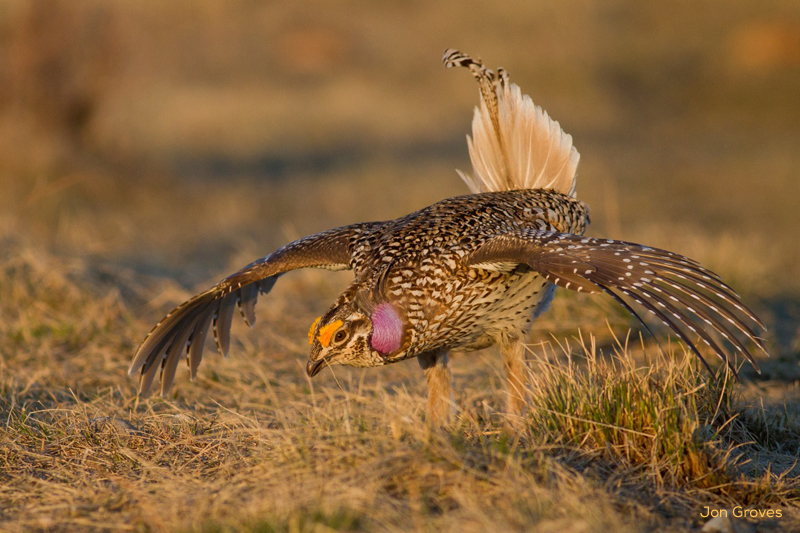Sharp-tailed Grouse
Tympanuchus phasianellus
Short and to the Point
The Sharp-tailed Grouse gets its name from the two central tail feathers that extend past the others, giving their tail a short, pointed appearance. They were called “Fire Birds” by native North Americans because of their reliance on wildfires to create open grassy areas in wooded habitats.
Dancing Grounds
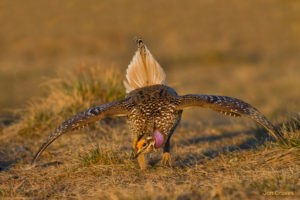
Male sharp-tailed grouse dance on leks to attract females during the breeding season.
In late March, Sharp-tailed Grouse gather at traditional dancing grounds, called leks. The males perform elaborate and energetic courtship displays to attract mates. Most leks are in open areas with short vegetation, often on a hill top.
Taller is Better
Sharp-tailed Grouse prefer to nest in grassy and shrubby areas with good grass cover and litter left over from last year’s growth. Nesting success is higher in native vegetation and undisturbed areas with taller and denser grasses.
Varied Menu
The Sharp-tailed Grouse menu varies throughout the year. In spring and summer, adults eat insects, seeds and green vegetation. Chicks rely largely on insects in their first couple of months. In fall and winter, they switch to berries, buds and left over grain.
Population
Although the exact population is unknown, lek counts and other bird surveys indicate that Sharp-tailed Grouse numbers have declined significantly over the last 40-50 years.
Current Threats
- Loss of both the quantity and quality of habitat in the grasslands and parklands, particularly the cultivation of native habitats.
- Habitat fragmentation by agricultural, urban and industrial activity leads to lower nesting success and can increase some predator numbers and predator efficiency (e.g. owls, hawks, and coyotes).
- Fire suppression in parkland and boreal areas has reduced the amount of open grassland available for grouse in wooded habitats.
- Collisions with vehicles and fences.
- Pesticide use reduces insect populations that grouse rely on in spring and summer.
Species@Risk Quiz
Test your knowledge about Alberta’s grassland species at risk
Sharp-tailed Grouse
Question 1 |
For nesting, Sharp-tailed Grouse prefer:
Densely forested areas
| |
Short, heavily grazed grasslands | |
Tall grasses and low shrubs |
Question 2 |
A lek is a place that Sharp-tailed Grouse gather to:
Feed on abundant insects
| |
Dance and display to attract mates | |
Huddle down for the winter |
Question 3 |
Sharp-tailed Grouse chicks are vulnerable to:
Cold, wet weather after hatching
| |
Being trampled by cattle and run over by vehicles | |
Predators such as foxes, coyotes and hawks. | |
All of the above |
Question 4 |
In the winter, Sharp-tailed Grouse:
Remain in Alberta | |
Migrate to the west coast | |
Migrate to the southern USA and Mexico |
Public
- Do not disturb leks, dancing grouse or nests. Keep 500 m away from these areas from mid-March to mid-July.
- Support native grassland and parkland habitat by choosing grass-fed meat in the grocery store.
- Voice your support for native grassland conservation with your political leaders.
- Educate yourselves and your family about Sharp-tailed Grouse and their role in the grassland ecosystem.
Landowners
- Hang on to your native grasslands and shrubby areas and keep them healthy.
- Do not disturb leks, dancing grouse or nests. Keep 500 m away from these areas from mid-March to mid-July.
- Light to moderate grazing is compatible with maintaining healthy grasslands for Sharp-tailed Grouse and long-term sustainability of the range. Leaving grass growth provides suitable nesting materials and locations for grouse in the following spring.
- Avoid grazing native grasslands between mid-March and mid-June.
- Limit grazing in shrubby and riparian areas by providing salt and water at alternative locations.
- Limit pesticide use as this reduces the number of insects available for adult grouse and their chicks.
- In your negotiations with oil and gas companies, steer them away from leks and avoid disturbance activities during the breeding and nesting season (mid-March to mid-June).
- Talk to your children and neighbours about the privilege of having Sharp-tailed Grouse on your land.
What MULTISAR Does
- Assists in monitoring historical Sharp-tailed Grouse leks and conducting surveys for new leks as part of its Habitat Conservation Strategies on participating ranches.
- Plants shrubs to provide cover and food for Sharp-tailed Grouse in appropriate areas.
- Cooperates with landowners to restore cropland to native grassland at appropriate locations.
- Provides information about Sharp-tailed Grouse and their habitat and recommendations for management practices compatible with grouse needs.
